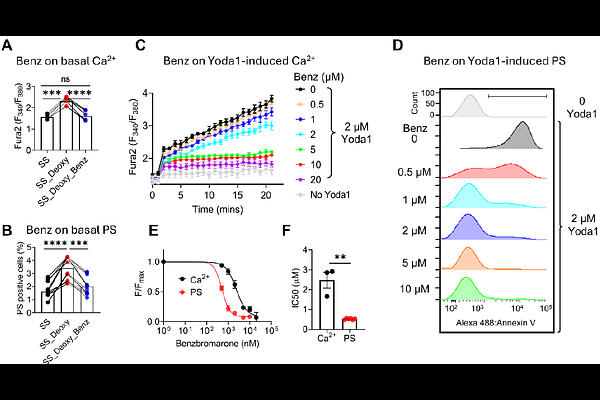Targeting PIEZO1-TMEM16F Coupling to Mitigate Sickle Cell Disease Complications

Targeting PIEZO1-TMEM16F Coupling to Mitigate Sickle Cell Disease Complications
Liang, P.; Wan, Y.-C. S.; Shan, K. Z.; Chou, R.; Zhang, Y.; Delahunty, M.; Khandelwal, S.; Francis, S.; Arepally, G. M.; Telen, M. J.; Yang, H.
AbstractA deeper understanding of sickle cell disease (SCD) pathophysiology is critical for identifying novel therapeutic targets. A hallmark of SCD is abnormal phosphatidylserine (PS) exposure on sickle red blood cells (RBCs), which contributes to anemia, thrombosis, and vaso-occlusive crises (VOC). However, the mechanisms underlying this excessive PS exposure remain unclear. Here, we identify TMEM16F, a Ca2+-activated lipid scramblase, as a key mediator of PS exposure downstream of Ca2+ influx through the mechanosensitive channel PIEZO1 in sickle RBCs. Electrophysiology, imaging and flow cytometry reveal that deoxygenation-induced sickling promotes PIEZO1 activation, triggering Ca2+ entry, TMEM16F activation, and PS exposure. This cascade enhances PS+ microparticle release, thrombin generation, and RBC adhesion to endothelial cells. Notably, partial PIEZO1 inhibition with benzbromarone, an anti-gout drug, suppresses these changes. Our findings thus define a previously unrecognized mechanotransduction pathway in sickle RBCs and propose a unique therapeutic strategy to mitigate hypercoagulability and vaso-occlusion associated with SCD.